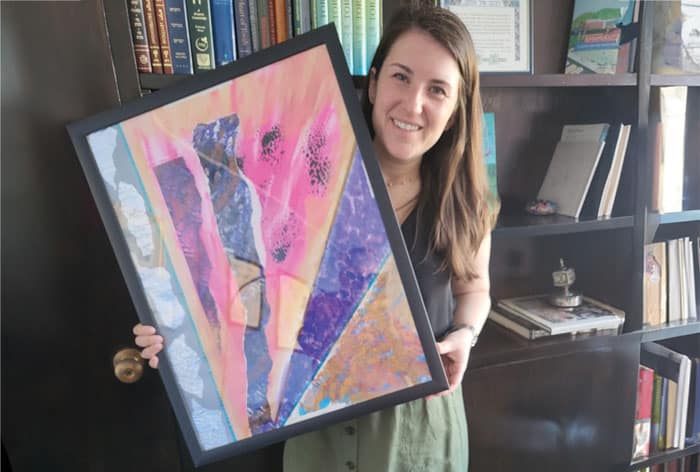 Rabbi Liora Alban holding “B’reishit (In the Beginning) Now,” a piece she created last October at the Jewish Studio Project
Rabbi Liora Alban holding “B’reishit (In the Beginning) Now,” a piece she created last October at the Jewish Studio Project Even though Rabbi Liora Alban has only been ordained for four years, her career is already a work of art. The office of the associate rabbi at Temple Emanuel of Beverly Hills is decorated with creative art.
Rabbi Alban believes in building community through art. After all, her rabbinic thesis centered on Jewish visual art. In her first year at Temple Emanuel, she has regularly sought imaginative ways to weave art into her rabbinate. While talking to the Journal, she pointed out a proud community project on a nearby wall. “Take this Tu b’Shevat painting,” she said. “We study a little text on Tu b’Shevat, what it is, and then we all made this tree painting – together – step-by-step. I led it.”
As director of Temple Emanuel’s Religious School, she has 70 students in grades K through 12. “It was important to me to bring in an art specialist, and we did,” the rabbi said. “Maya is an amazing young woman who grew up at the day school here. She comes once a month. Two weeks ago we did paper-folding activity where the kids got to make their version of a flower pot or a tree for Tu b’Shevat. She does all sorts of creative things, using tactile learning, using art, using different mediums.” The school kids instantly connected with the specialist. They have so much fun, they want her to come back every week.
“When I was a kid,” she said, “that was how I most liked to learn, through art, through tactile learning, through the creative.”
Many students see the specialist’s visits as a break. They don’t yet realize is that doing art is a way of accessing learning, a way of synthesizing the learning kids have done, a way of taking what they are learning in class and producing something out of it.
The rabbi would also like to bring art to their parents. “The challenge,” she said, “is that a lot of adults get very afraid of art. Many who come to my adult learning classes will say ‘Oh, I would love to come, but art is not my thing. I will come to your next class.’”
Next never quite happens. But, she said, “the same people who demur at joining an art class gladly will come to an adult learning session when they are looking at texts or listening to music.” She is mystified by people being cowed by visual art.
As an art teacher, she learned early that people — mainly adults — get afraid around art. “They think they are not good. They don’t come to a class because they think they are not talented enough. They have not done art since they were in pre-school.” But she discovered that when people come together to make art, they relax. They connect with each other. Talking while they are painting, they have fun with it. In a parallel sense, they build community while they are learning. “They don’t realize,” said the rabbi, “it is real art.”
There never has been doubt in Rabbi Alban’s mind about who shaped her life. “I have enjoyed art my whole life,” Alban said. “When I was a kid, my grandmother placed me at the table and gave me my first set of watercolor pencils. My earliest memories are of sitting at my grandmother’s kitchen table, drawing with her. It appealed to me immediately. I found it so relaxing. She really cultivated that part of me. She paid for my first art classes at Temple Ahavat Shalom in Northridge.” The rabbi’s grandmother did not live to see her star student grow and mature; she died when Liora was eight years old.
Rabbi Alban is currently doing a fellowship with the Jewish Studio Project, a Jewish art studio in Berkeley. Participating in an in-person retreat, all of them made pieces together. She loved it.
Was it difficult to settle on a career path between art and the rabbinate?
“A little bit,” said Rabbi Alban. “I had wanted to be a rabbi since I was a teenager.” The thing about the rabbinate, she said, “was that it provided a very clear path. I knew what I had to do. Five years of rabbinical school, then I would be a rabbi. In my senior year at Berkeley, I really enjoyed art history, but it was not as much of a clear path.”
Growing up at Temple Ahavat Shalom, “I just loved everything there about my Jewish community,” said Rabbi Alban.
In preparing for her bat mitzvah, a sudden realization occurred. “Wow!” she said to herself. “I can’t believe the rabbi and cantor get paid to spend their time at the Temple. I could do that, too, and make my life at the place I love being most. That thought at age 12 or 13 “kind of stuck with me. It was so natural. I could be a rabbi who utilizes art.” And so she has. “My parents are really proud.”
Fast Takes with Rabbi Alban
Jewish Journal: The most enjoyable book you have read outside of Judaism?
Rabbi Alban: “The Seven Husbands of Evelyn Hugo,” by Taylor Jenkins Reid.
J.J.: Something you always wanted to do but never have?
Rabbi Alban: Go to Bali, Indonesia. But I am doing that this year.
J.J.: Your favorite spare time activity?
Rabbi Alban: I like going to all types of museums, I like going on hikes with my husband Daniel and our dog Rexy, and spending time with friends and family.
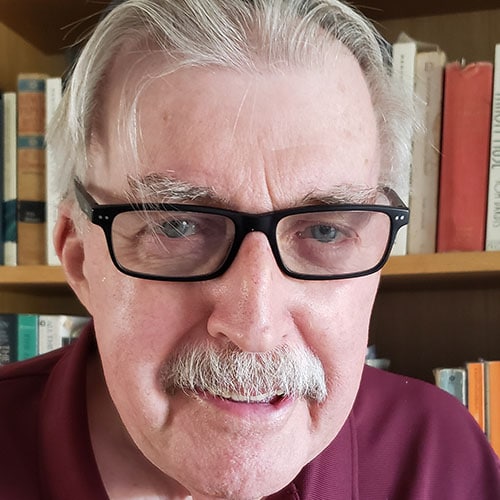






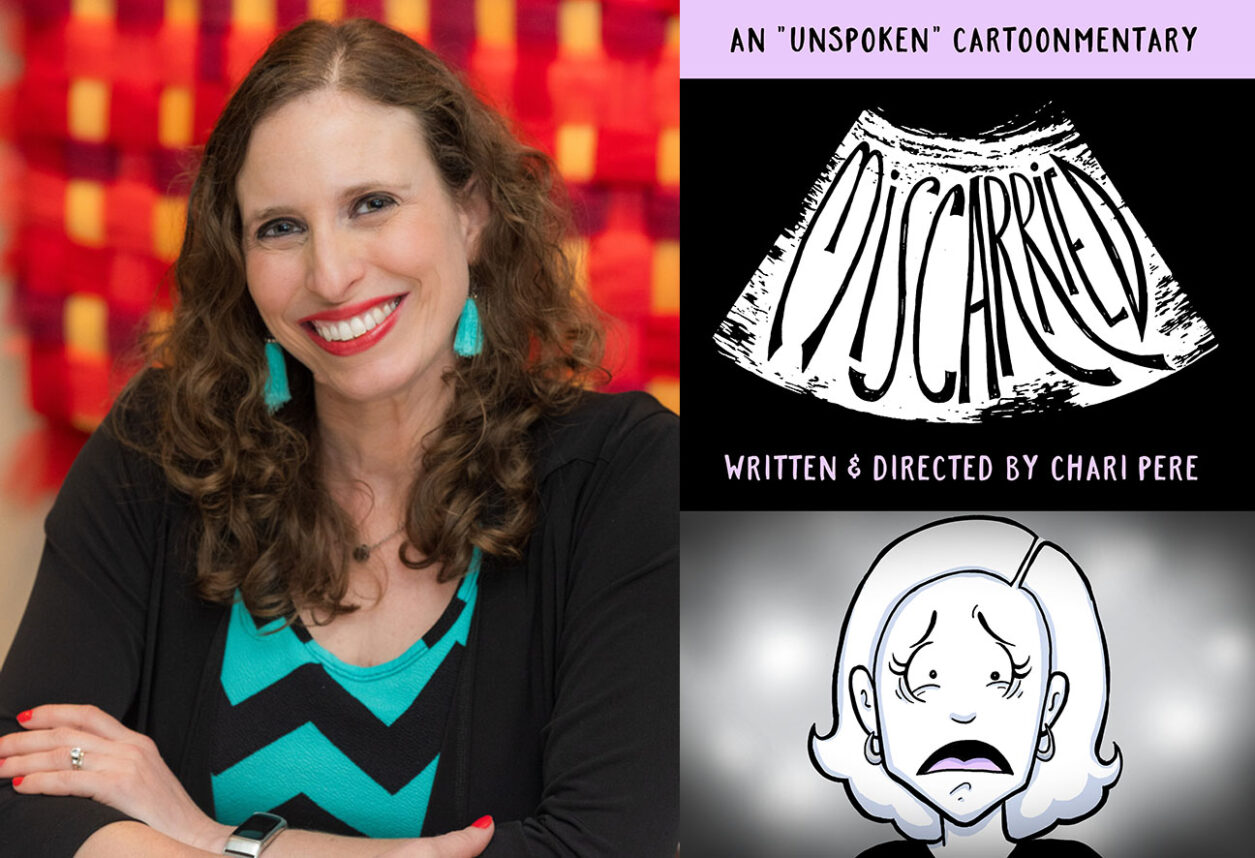
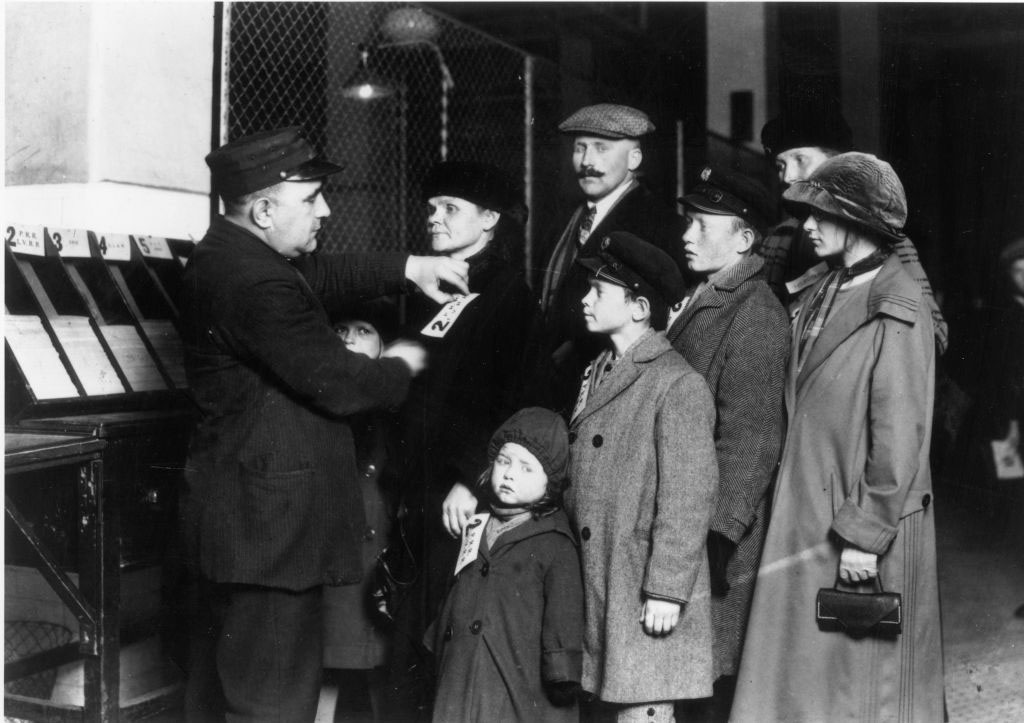





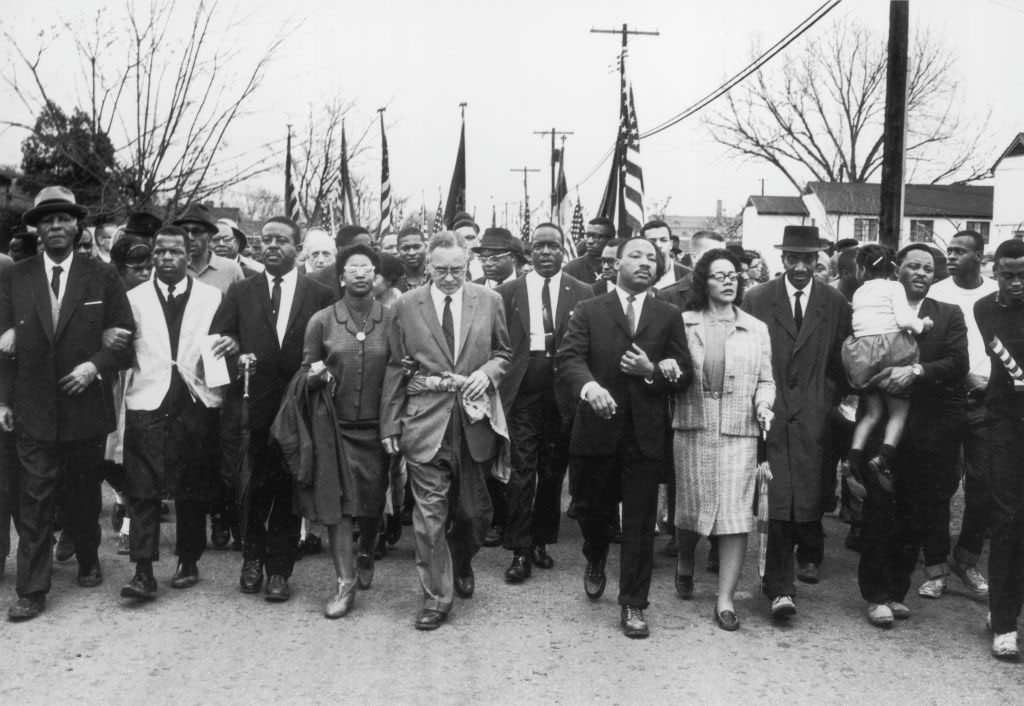
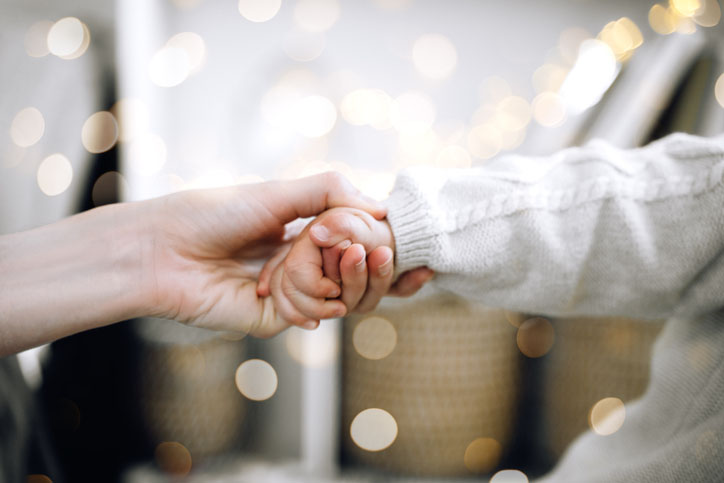

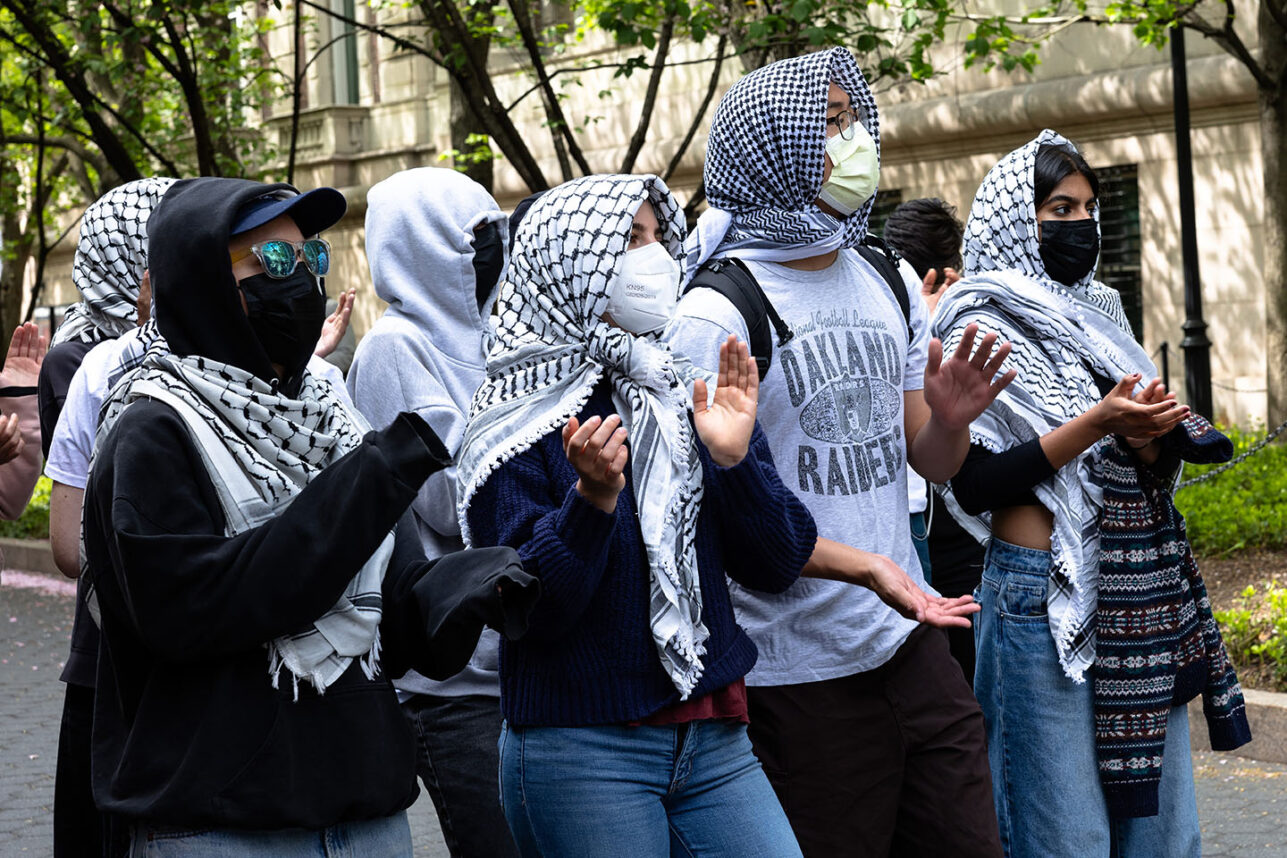




 More news and opinions than at a Shabbat dinner, right in your inbox.
More news and opinions than at a Shabbat dinner, right in your inbox.